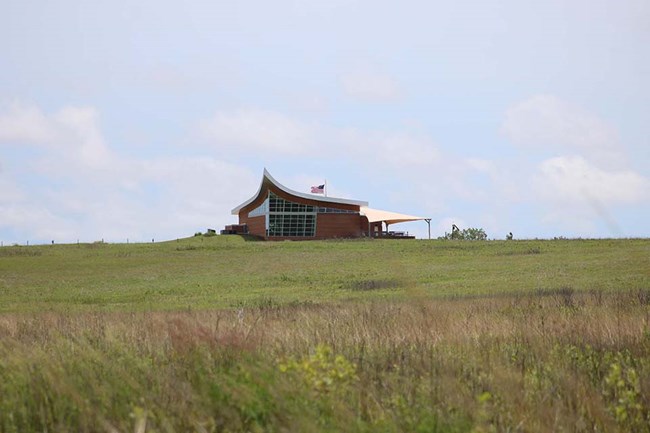
NPS
The park lies within the glaciated Drift Hill Region of Southeast Nebraska. The vegetation at HOME is roughly two-thirds prairie, reconstructed in 1939, and one-third woodland that follows Cub Creek. The approximately 100 acres of reconstructed tallgrass prairie, includes dominant grass species such as big bluestem, little bluestem, and Indian grass. Common forbs include goldenrods, sunflowers (Helianthus spp.), leadplant (Armorpha canescens), and roundhead lespedeza (Lespedeza capitata). This is the second oldest prairie restoration in the nation.
About 60 acres of the park are deciduous riparian forest, dominated by oaks, silver maple, hackberry, and cottonwood (Populus sp.). An inventory documented a rare mesic bur oak forest at HOME. A report by Mlekush and DeBacker (2003) contains a complete discussion of the woodland community. The understory is nearly absent of shrubs and dominated by a dense herb layer of graminoids, prominent early in the season, and tall coarse perennials, prominent as the season progresses. Native edge plants include wild plum (Prunus americana), dogwood, and coralberry (Symphoricarpos orbiculatus).
Source: NPS DataStore Saved Search 3507 (results presented are a subset). To search for additional information, visit the NPS DataStore.
Source: NPS DataStore Collection 4260 (results presented are a subset). To search for additional information, visit the NPS DataStore.
Check out the links below for other interesting science information about your park:
Air Quality in Parks
Learn about the air quality at your park and how it has changed over time.
NPS Geodiversity Atlas
An interactive map to explore the full variety of natural geologic (rocks, minerals, sediments, fossils, landforms, and physical processes) and soil resources and processes that occur in your park.
NPSpecies
Find out what plants and animals are present in your park or other parks.
Last updated: February 2, 2021
